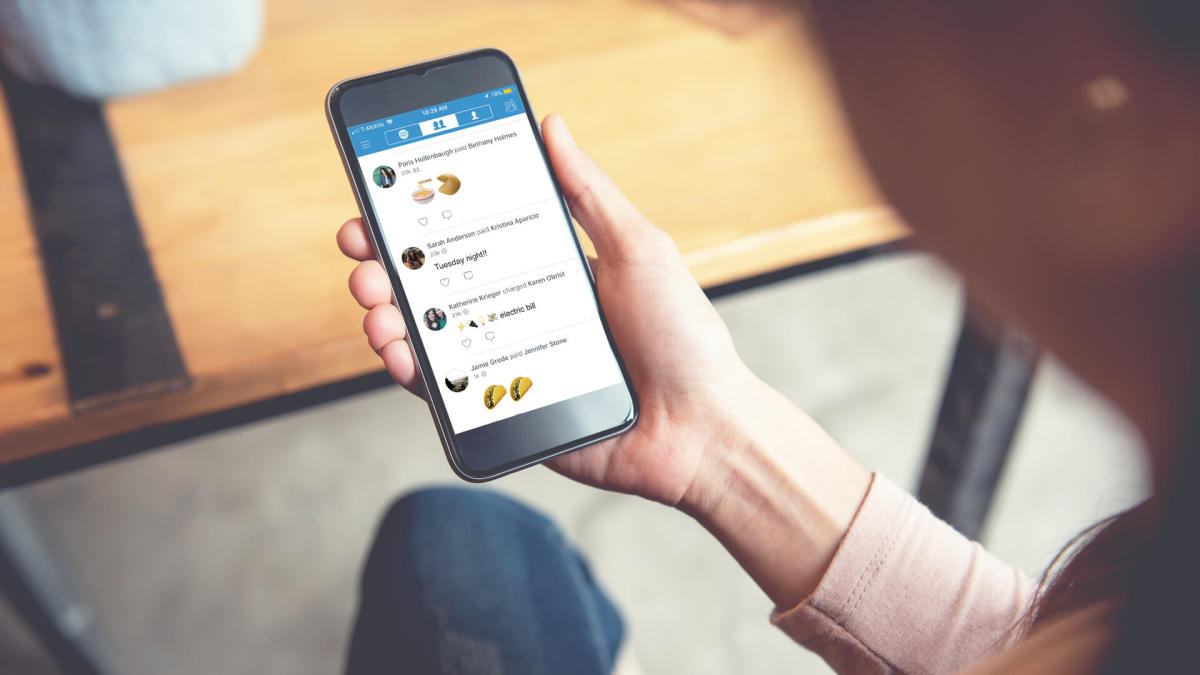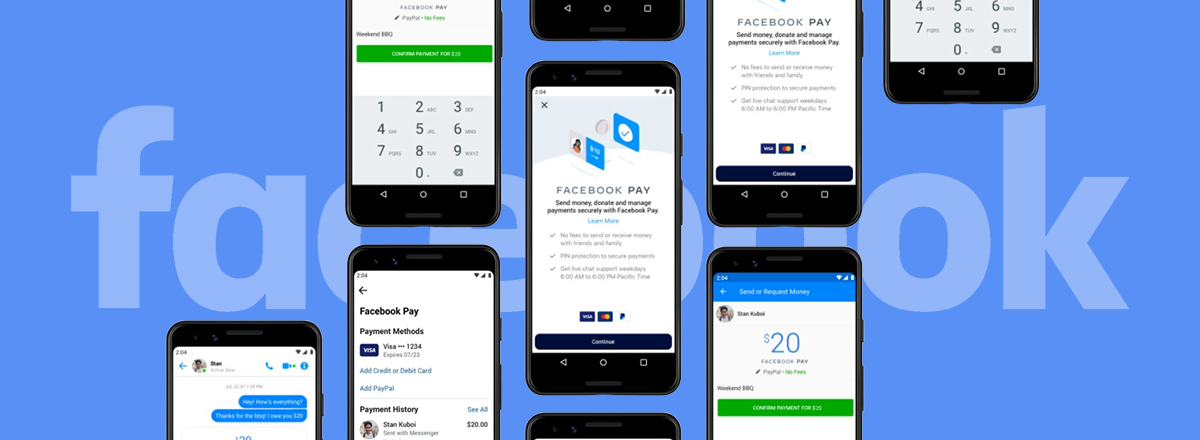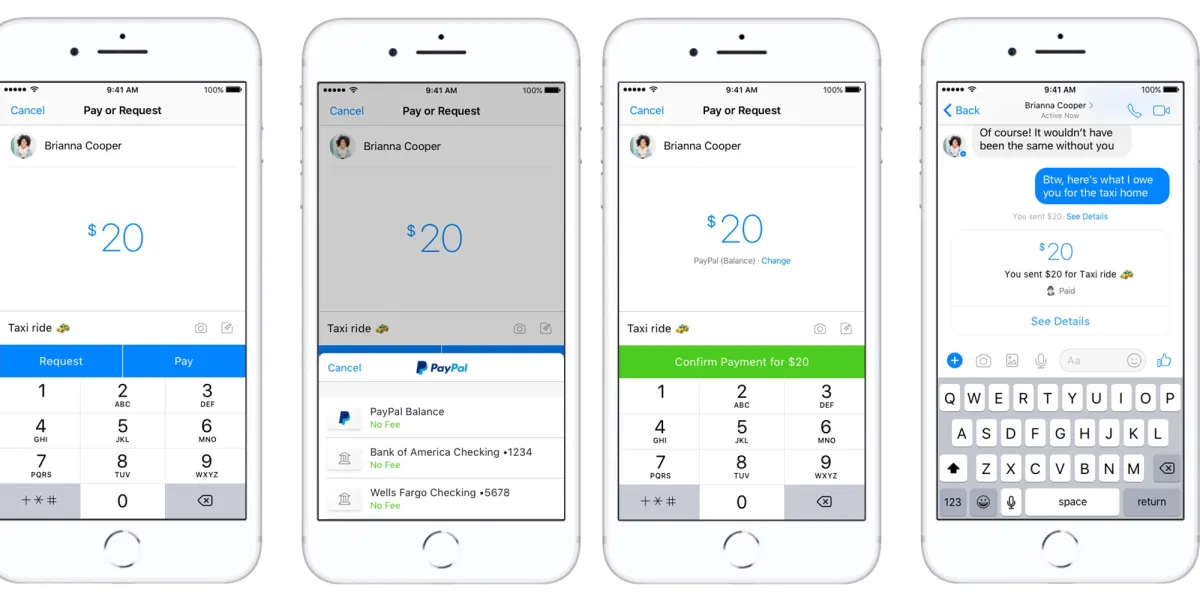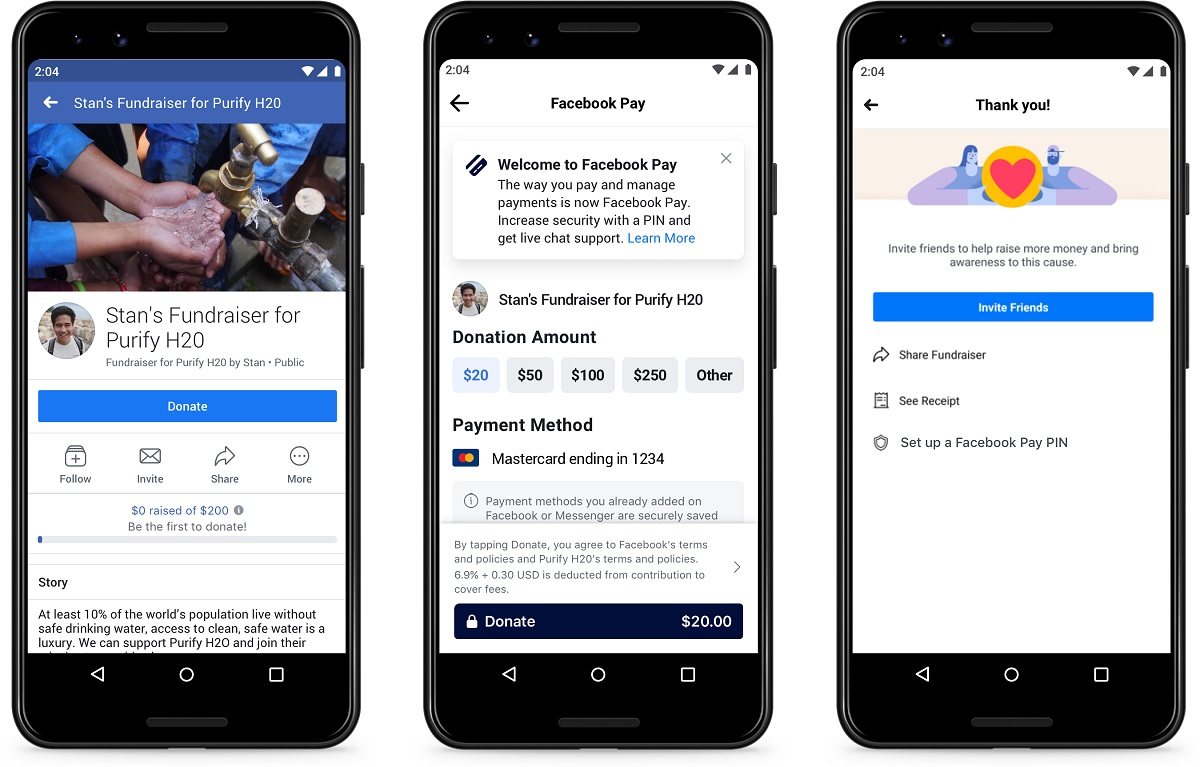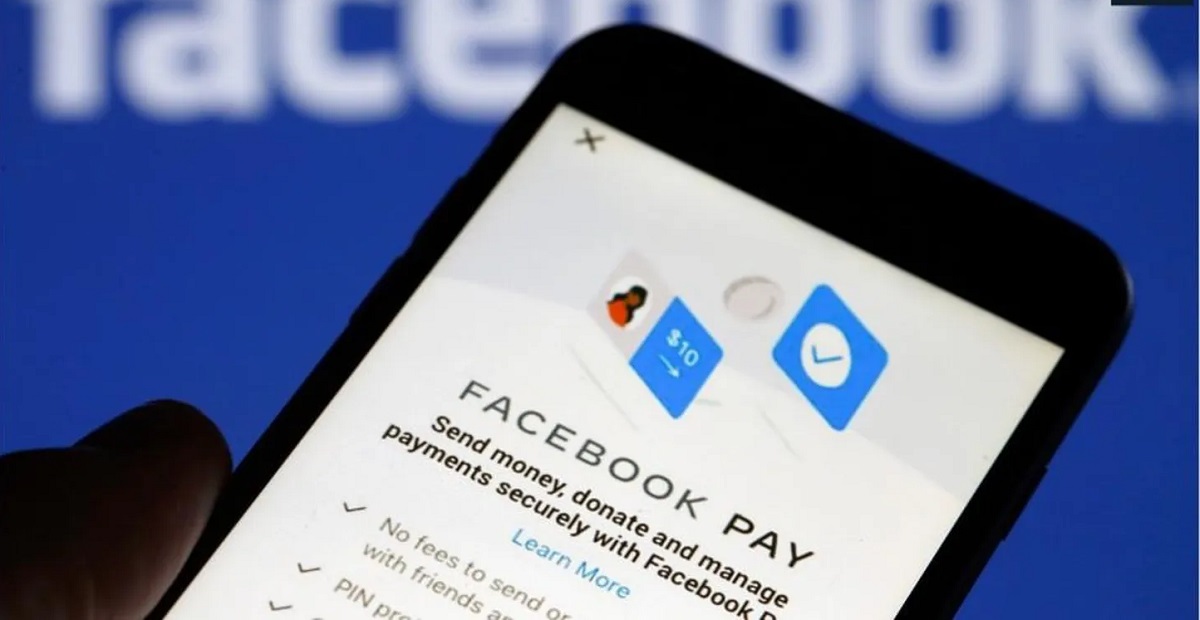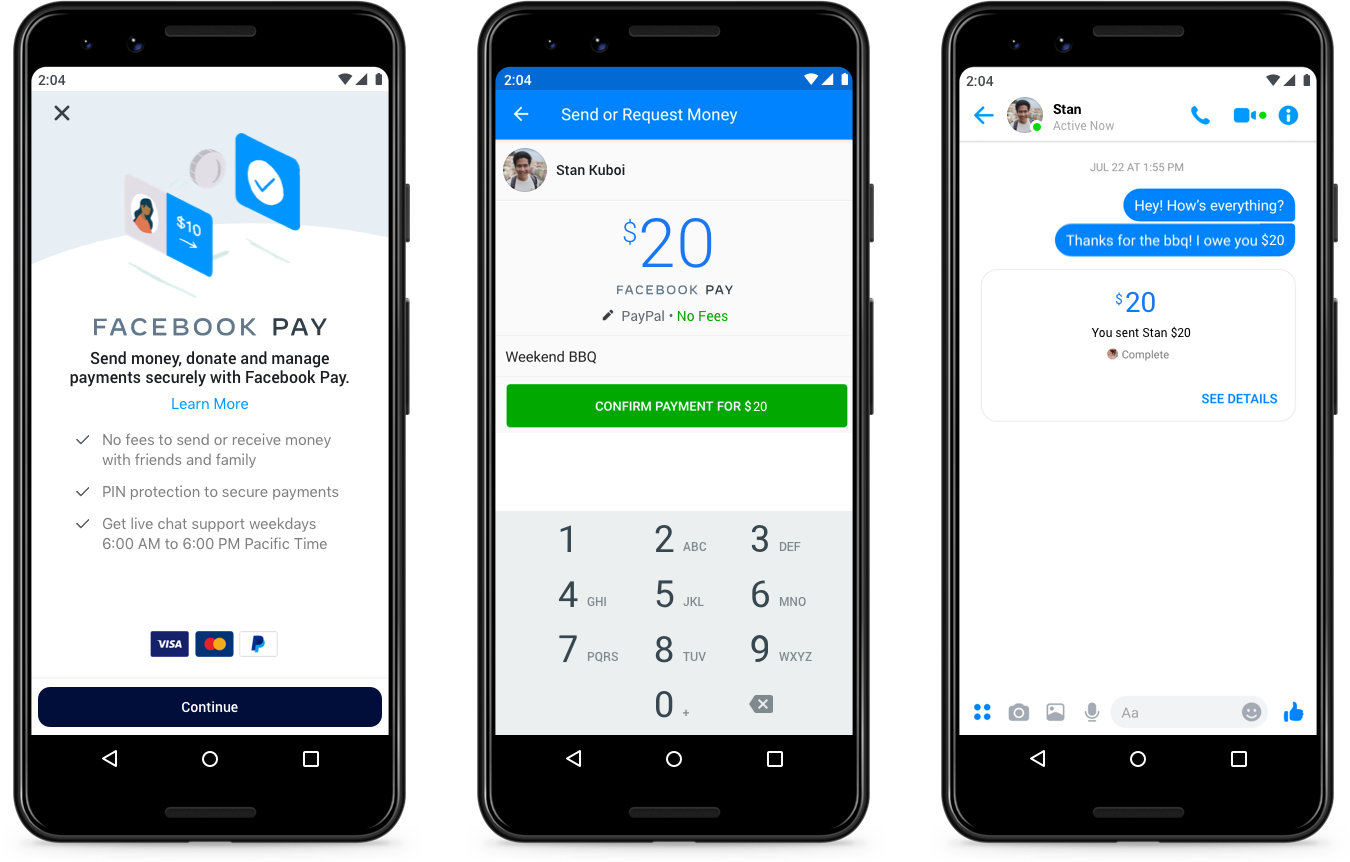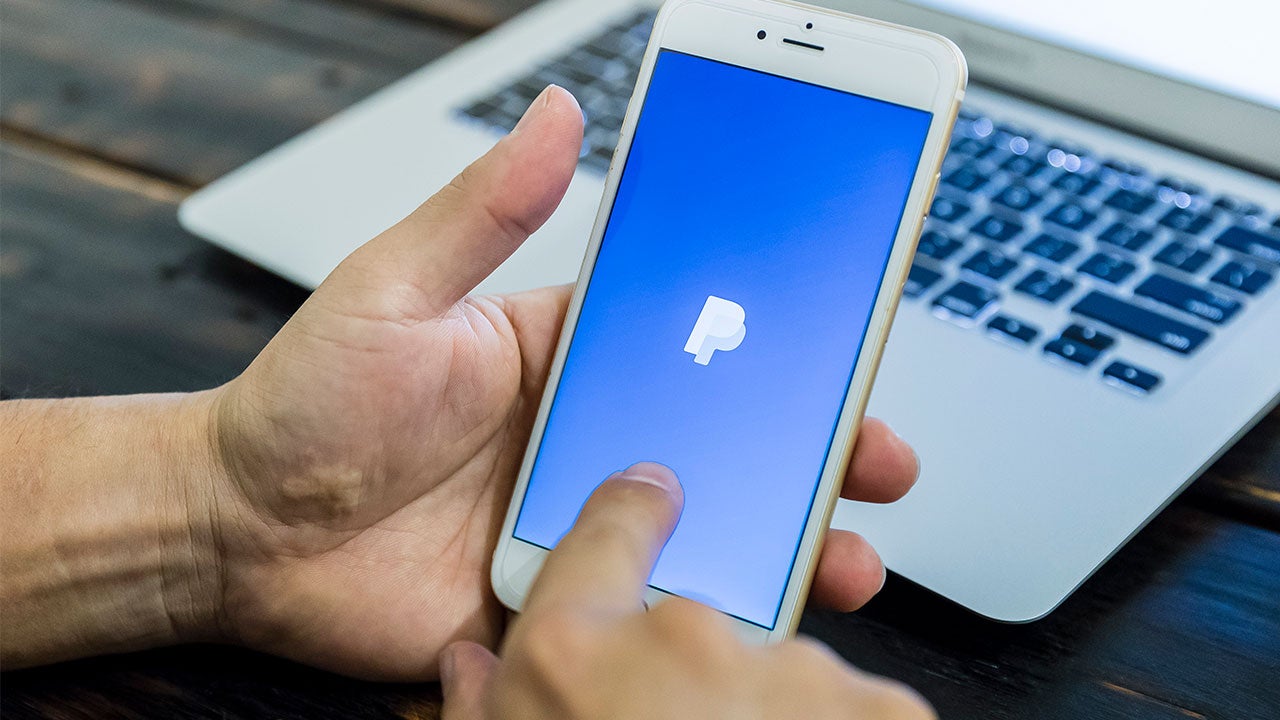Introduction
Welcome to the world of Facebook Pay, the seamless and secure payment service offered by Facebook. With the increasing popularity of online transactions, Facebook Pay provides a convenient way to send and receive money directly through the Facebook platform. Whether you’re splitting a bill with friends, purchasing products from businesses, or supporting a cause, Facebook Pay simplifies the payment process and helps you manage your transactions effortlessly.
In this article, we will delve into the authorization process of Facebook Pay and discuss how long it typically takes for transactions to be authorized. Understanding the timeline for authorization is crucial for users who want to ensure smooth and timely payments without any unnecessary delays. So, let’s delve into the world of Facebook Pay and discover what factors contribute to the length of the authorization process.
Before we proceed, it’s important to note that Facebook Pay is available to users in select countries and is subject to terms and conditions set by Facebook. Ensure that you are eligible to use Facebook Pay in your region before initiating any transactions.
What is Facebook Pay?
Facebook Pay is a secure and convenient payment service offered by Facebook that allows users to send and receive money directly through the Facebook platform. It serves as a digital wallet, simplifying the payment process for a variety of transactions. Whether you want to split the bill with friends, make a purchase from a business, or donate to a cause, Facebook Pay offers a seamless solution.
One of the key advantages of Facebook Pay is its integration across different Facebook-owned platforms and services. You can use Facebook Pay on Facebook, Messenger, Instagram, and WhatsApp, allowing you to make payments easily within your favorite apps. This integration enhances the user experience and eliminates the need to switch between multiple platforms or payment apps.
Facebook Pay supports various payment methods, including credit and debit cards, as well as popular payment platforms such as PayPal. By securely storing your payment information, you can make payments with just a few taps, eliminating the need to repeatedly enter your card details for each transaction.
Furthermore, Facebook Pay prioritizes security and privacy. It uses advanced encryption technology to protect your financial information and transactions. Additionally, Facebook Pay allows you to set up additional security measures, such as requiring a PIN or biometric authentication, to ensure that only authorized users can initiate transactions.
It’s important to note that Facebook Pay is not limited to peer-to-peer transactions. It also allows businesses to accept payments, making it a versatile tool for both personal and commercial purposes. This opens up doors for small businesses and entrepreneurs to easily connect with customers and streamline their payment processes.
Now that we have a basic understanding of what Facebook Pay is, let’s explore how it works and the steps involved in using this payment service.
How Does Facebook Pay Work?
Facebook Pay operates on a simple and user-friendly interface that makes it easy to send and receive money within the Facebook ecosystem. The process typically involves the following steps:
- Setting up Facebook Pay: To get started, you need to link a valid payment method, such as a debit card or credit card, to your Facebook account. You can do this by going to the Payments settings section in your Facebook app and entering your payment details. Alternatively, you can add a payment method during the checkout process when making a purchase.
- Initiating a transaction: Once your payment method is set up, you can initiate a transaction by selecting the “Pay” option in the relevant conversation or transaction. This could be within a chat on Messenger, a post on Facebook Marketplace, or an Instagram Direct message. You can specify the amount you want to send or enter the purchase price.
- Confirming the transaction: After specifying the transaction details, you will typically need to review and confirm the payment. This step ensures that you have entered the correct amount and that you want to proceed with the transaction.
- Authentication and authorization: Facebook Pay may prompt you to authenticate your identity for security purposes. This could involve entering a PIN, using biometric authentication (such as fingerprint or face recognition), or confirming your transaction through an associated payment app. The authentication step ensures that only authorized users can complete transactions.
- Completing the payment: Once your authentication is successful, Facebook Pay will proceed to authorize the transaction and process the payment. This usually happens within a few seconds, and you will receive a confirmation message indicating that the payment was successful.
- Reviewing transaction history: Facebook Pay keeps a record of your transaction history, allowing you to review past payments and track your spending. You can access this information through the Payments settings in your Facebook account, providing you with a convenient way to keep track of your financial activities.
It’s important to note that the specific steps and features of Facebook Pay may vary slightly depending on the platform and country in which you are using the service. However, the overall process remains similar, aiming to provide a seamless and secure payment experience within the Facebook ecosystem.
Now that you understand how Facebook Pay works, let’s explore the typical timeframe for the authorization process and the factors that can affect it.
How Long Does the Authorization Process Take?
The authorization process for Facebook Pay transactions typically takes a few seconds to a few minutes, but in some cases, it may take longer depending on various factors. It’s important to note that while Facebook aims to provide a fast and efficient payment experience, the exact duration can vary based on several elements.
In general, most transactions through Facebook Pay are processed and authorized within seconds. When you initiate a payment, Facebook Pay verifies the transaction details, your payment method, and any additional security measures you have set up, such as a PIN or biometric authentication. Once this verification is complete, the transaction is authorized, and the payment is processed.
However, there are certain situations where the authorization process may take longer. These factors can include:
- Security Checks: To ensure the security of transactions, Facebook Pay may occasionally perform additional security checks. This can include reviewing your transaction history, checking for any suspicious activity, or cross-checking with payment networks and financial institutions. While this is a necessary precaution, it may result in a slight delay in the authorization process.
- Payment Method Verification: If you have recently added or updated your payment method, Facebook Pay may need to verify the information with your bank or credit card provider. This verification process can take a bit longer, especially if there is a delay in receiving confirmation from the financial institution.
- Connectivity Issues: In some cases, slower internet connections or temporary issues with the Facebook platform may cause delays in the authorization process. These can be temporary and may resolve themselves once the connectivity is stable.
- System Maintenance: Occasionally, Facebook may need to perform system maintenance or updates that could impact the authorization process. During these periods, there may be delays in processing transactions. Facebook typically notifies users in advance about any planned maintenance to minimize disruptions.
While these factors can contribute to longer authorization times, it’s important to note that they are not common occurrences. Most Facebook Pay transactions are processed quickly and seamlessly, ensuring a smooth and efficient payment experience.
Now that we have explored the typical timeline for authorization, let’s discuss some common reasons that may cause delays in the process.
Factors Affecting the Authorization Time
Several factors can impact the authorization time for Facebook Pay transactions. While the majority of transactions are authorized within seconds, it’s essential to understand these factors to help manage expectations and minimize any potential delays. Here are some key factors that can affect the authorization time:
- Payment Method: The type of payment method you use can influence the authorization time. Different payment providers and networks may have varying processing speeds. For example, transactions made through credit or debit cards may have slightly different authorization times compared to those made through payment platforms like PayPal or Venmo.
- Financial Institution: The speed of authorization can also depend on the financial institution associated with your payment method. Some banks or credit card companies may have more streamlined processes, allowing for faster authorizations, while others may have more stringent verification procedures that can lead to longer authorization times.
- Transaction Amount: In certain cases, transactions involving larger amounts may require additional verification and security checks to ensure the legitimacy of the payment. This can result in longer authorization times compared to smaller transactions.
- Transaction Volume: During peak periods or high-demand situations, such as holidays or limited-time promotions, the volume of transactions being processed by Facebook Pay may increase significantly. This surge in transaction volume can cause delays in the authorization process as the system experiences higher than usual traffic.
- Network Connectivity: The speed and stability of your internet connection or mobile network can impact the authorization time. Slow or unstable connections may lead to delays in transmitting transaction information, resulting in longer authorization times.
- Account Security Settings: If you have enabled additional security settings such as two-factor authentication or require biometric confirmation for transactions, these extra steps can lengthen the authorization time. While these measures enhance security, they may add a few extra seconds to the overall process.
While these factors can influence the authorization time, it’s important to note that Facebook Pay aims to provide a fast and efficient payment experience for users. The majority of transactions are still processed within seconds, ensuring a seamless payment experience.
Now that we’ve discussed the factors that can affect the authorization time, let’s move on to explore common reasons for delayed authorization.
Common Reasons for Delayed Authorization
While most Facebook Pay transactions are authorized within seconds, there are instances where the authorization process may be delayed. Understanding the common reasons for these delays can help you troubleshoot and address any issues that may arise. Here are some of the common reasons for delayed authorization:
- Invalid Payment Information: If the payment information associated with your Facebook Pay account is incorrect or outdated, it can result in a delay in the authorization process. Ensure that your payment details, such as credit card numbers or expiration dates, are accurate and up to date.
- Insufficient Funds: If the payment method you are using does not have sufficient funds to cover the transaction amount, it can lead to a delayed authorization. Make sure that you have enough funds in your account or credit card available to complete the transaction.
- Security Concerns: In some cases, Facebook Pay may flag a transaction if it triggers certain security protocols. This can include transactions from unfamiliar or suspicious sources, or if there is a mismatch between the transaction details and your previous spending patterns. These security measures are in place to protect your account, but they may result in delays while the transaction is reviewed for authorization.
- Card Verification: If you have recently added a new payment card to your Facebook Pay account, it may require verification from the issuing bank. This verification process can cause delays in authorization as the bank confirms the card’s validity and approves its use for transactions.
- Technical Glitches: Occasionally, technical issues or glitches with the Facebook Pay system or the associated payment networks can cause delays in the authorization process. These issues are usually temporary and resolved quickly, but they can still result in delayed authorizations.
- Network Congestion: During periods of high internet traffic or network congestion, the authorization process may be delayed. This can occur during peak usage hours or in areas with limited network coverage. Waiting for the network congestion to ease can help speed up the authorization process.
If you encounter a delay in authorization, it’s recommended to review the transaction details, ensure that your payment information is correct and up to date, and verify that you have sufficient funds in your account. If the issue persists, you can contact Facebook Pay support for further assistance.
Now that we’ve explored the common reasons for delayed authorization, let’s discuss the steps you can take if the authorization process takes too long.
What to Do If Facebook Pay Authorization Takes Too Long
If you find that the authorization process for your Facebook Pay transaction is taking longer than usual, there are several steps you can take to address the issue and ensure a smooth payment experience:
- Check your internet connection: Slow or unstable internet connections can contribute to delays in the authorization process. Ensure that you have a stable internet connection and try again.
- Verify your payment information: Double-check that the payment information associated with your Facebook Pay account is accurate and up to date. This includes verifying your credit or debit card details, expiration dates, or any other payment method you have linked.
- Contact your payment provider: If you suspect that the delay is due to an issue with your payment provider, such as a credit card company or bank, it may be helpful to reach out to their customer support. They can provide insights into any potential issues or delays from their end.
- Check for any security alerts: If your transaction has triggered any security protocols in place, it may result in a delay. Review any emails, notifications, or messages from Facebook regarding the security status of your transaction. If needed, follow the instructions provided to resolve any security concerns.
- Reach out to Facebook Pay support: If the authorization delay persists or you encounter any other issues with Facebook Pay, it is advisable to contact Facebook Pay support for assistance. They can provide further guidance and address any specific concerns you might have.
- Consider alternative payment methods: If you continue to experience delays with Facebook Pay, you may want to consider using alternative payment methods, such as a different credit card or an alternative payment platform that is supported by the seller or recipient.
By following these steps, you can troubleshoot and address any issues that may be causing delays in the authorization process. Remember that occasional delays can occur, but Facebook Pay aims to provide a fast and efficient payment experience for users.
Now that we have discussed what to do if the authorization process takes too long, let’s summarize the key points and conclude our exploration of Facebook Pay authorization.
Conclusion
Facebook Pay offers a seamless and convenient way to send and receive money directly through the Facebook platform. Understanding the authorization process and the factors that can impact its duration is essential for a smooth payment experience. In most cases, Facebook Pay transactions are authorized within seconds, providing users with a fast and efficient payment service.
Factors such as the payment method, financial institution, transaction amount, and network connectivity can affect the authorization time. However, these factors typically do not cause significant delays in the majority of transactions.
If you encounter a delay in the authorization process, checking your payment information, verifying your internet connection, and contacting your payment provider can help troubleshoot the issue. Additionally, reaching out to Facebook Pay support can provide further assistance and guidance.
Facebook Pay prioritizes security and privacy, incorporating advanced encryption technology and allowing users to set up additional authentication measures. While these security protocols may add a few seconds to the authorization time, they are in place to protect your account and ensure secure transactions.
Overall, Facebook Pay offers a reliable and efficient payment service, simplifying transactions across multiple Facebook-owned platforms. By understanding the authorization process and following the steps outlined in this article, you can navigate any potential delays and enjoy a seamless payment experience with Facebook Pay.









